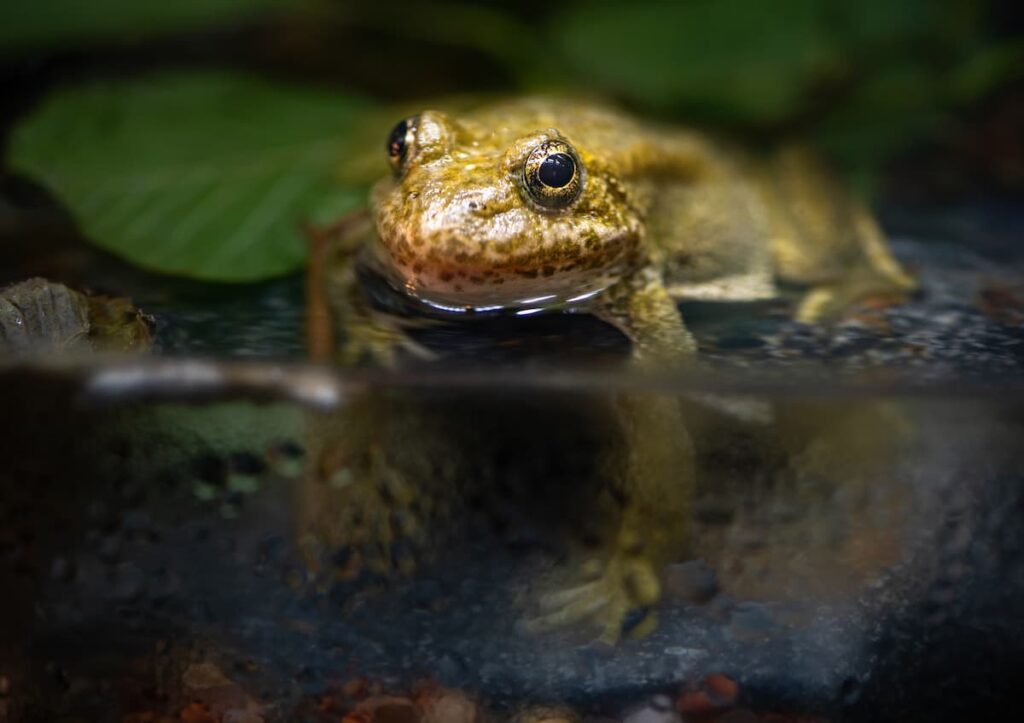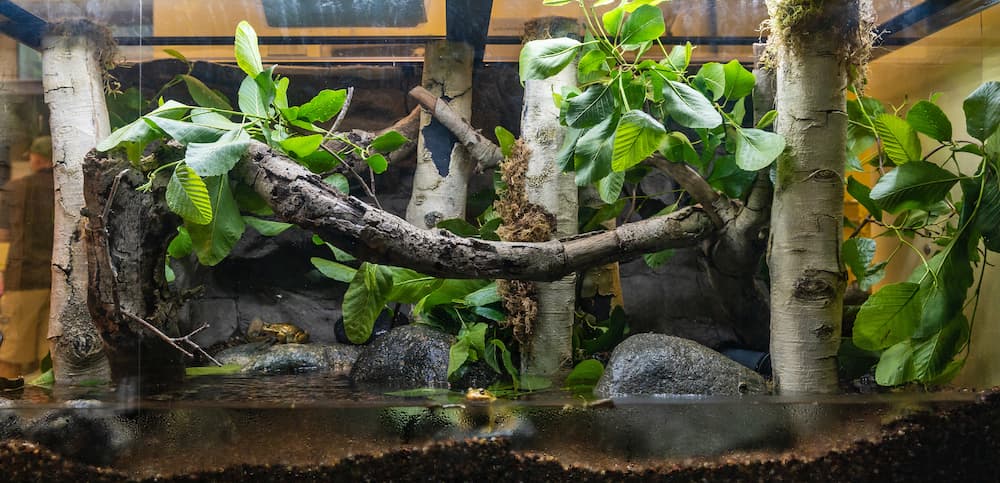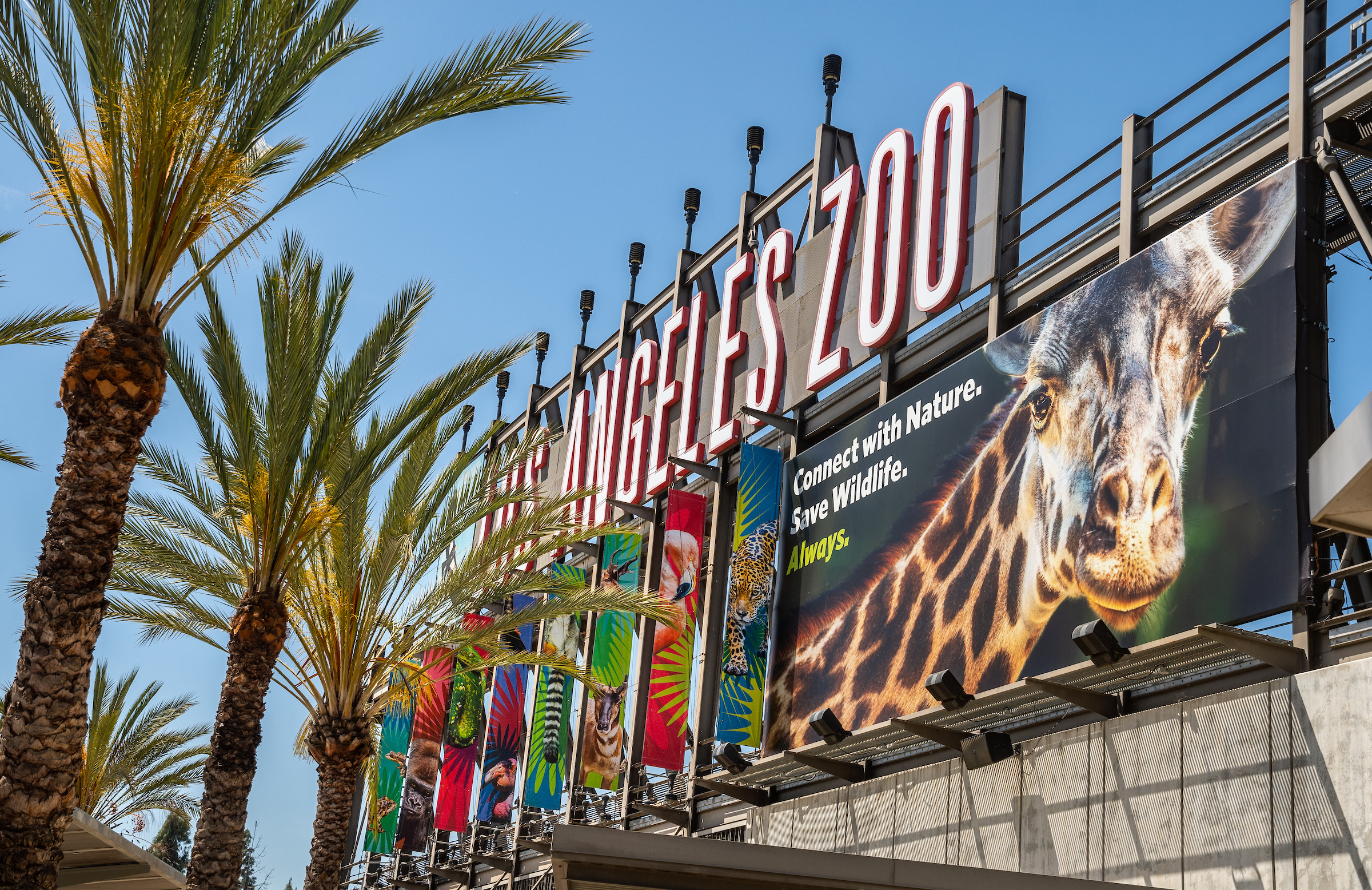by Autumn Hilden

There’s a brand-new, public-facing habitat in the LAIR, and you’re going to want to hop on over immediately to see it! Southern mountain yellow-legged frogs (SMYLFs) have been a cornerstone conservation project at the Zoo since 2007, but until now all the work to create an insurance population for this critically endangered native species has been completely behind the scenes. For the first time, and with expert input gleaned from years of work at the Zoo and in the field on how to do it the best way for the frogs, the SMLYFs will be showcased for everyone to see. The new bio-secure tank in the LAIR is the first public facing SMYLF habitat in any zoo.
We caught up with L.A. Zoo’s Curator of Reptiles Ian Recchio to learn more about why the public-facing habitat is so important and what went into creating it after all this time. But first, Recchio wanted to make clear how incredible this opportunity is for our Zoo guests. “Considering this species is only known from a few remote canyons in nature, only a few hundred adults are known to exist in the wild, and they are only active in the spring and summer months, there is little chance of seeing a southern mountain yellow-legged frog in real life,” he explains. “That opportunity is now uniquely offered at the Los Angeles Zoo’s LAIR facility.”
Adult SMYLFs will be on display from roughly April to October annually, which means you don’t have to wait any longer to finally see them! “Our program partners and I feel strongly,” Recchio says, “that allowing the general public to see the critically endangered southern mountain yellow-legged frog (Rana muscosa) up close and personal is the most impactful way to gain an appreciation for this unique California frog.“ They also wanted Zoo visitors to see all of the equipment and technology that goes into keeping a critically endangered montane amphibian healthy in its Zoo environment. “The life support systems alone are quite interesting, with chillers, biofiltration, specialized lighting, and more!” Recchio enthuses.

While the tank’s style may look familiar to many guests, the LAIR’s new SMYLF habitat has some pretty cool features, dreamed up by experts like Recchio, who has firsthand experience with the frogs’ wild habitats. While releasing Zoo-bred frogs into the wild at a particular site in the San Gabriel mountains, the SMYLF conservation team observed a few wild specimens still living there. “That site was influential in the design planning of our display habitat,” Recchio says. “We tried to create a slice of that canyon as the model, with birch trees, a rocky canyon background, even replicating the depth and flow of the water.”
Take time to spot these special measures taken for the SMYLFs when you visit. And know that even their seasonal time on view is managed to give them the most natural experience possible. “This timeline is because the species becomes dormant in the fall and winter in preparation for the breeding season,” Recchio explains. “During cooler months, we hibernate the group to replicate their natural environment, when they would not be visible.”
So make sure you visit the new habitat while the southern mountain yellow-legged frogs are up and about in these warmer months. After all, Recchio says, “the Los Angeles Zoo is the only place on earth outside of nature where you can see a live Rana muscosa.”

